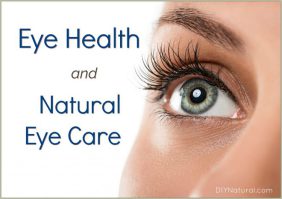June Blog
JUNE BLOG
EYE HEALTH
“The eyes are the windows to the soul.” Having healthy eyes, excellent vision and eyes free of pain or other symptoms is crucial to your health and wellbeing. According to a survey by the Centers for Disease Control and Prevention (CDC), approximately 21 million Americans have some type of vision problem. Conditions such as glaucoma and age-related macular degeneration can trigger vision loss and even blindness. Many individuals develop eye disease in middle age or symptoms may not appear until later on, when the condition is more advanced and harder to treat. In fact, some individuals may not realize they have a vision problem until an eye care professional detects irregularities during a routine screening or a comprehensive eye exam, in which a check of the retina, optic nerve, eye pressure and more are performed.
African Americans and people with a family history of glaucoma have a higher risk of developing the disease. Individuals who have diabetes can develop diabetic retinopathy, which can cause damage to the retina. Through detection and early treatment, experts estimate that nearly half of all vision loss and blindness can be prevented.
Symptoms of Eye Disease
In some cases, symptoms of certain eye diseases can overlap others. Watery eyes can be a sign of pink eye (conjunctivitis), allergies or a sty. Light sensitivity can indicate cataracts, migraines, or chalazion (a bump on the eyelid). Resting the eyes may assist in easing symptoms, but if you’re experiencing severe or lasting pain, you should call a doctor right away. Listed below are the most common symptoms of eye disease:
• Blurriness
• Discharge
• Flashes of light
• Irritation
• Light sensitivity
• Pain
• Tearing
• Vision loss
Common Eye Issues and Problems
Many vision problems are corrected with of eyeglasses, contacts or surgery. Millions of Americans have more serious eye conditions that can eventually lead to vision loss or blindness. Here are some eye problems that can develop:
• Refractive errors - the most common eye problem in the United States, which include:
- myopia or nearsightedness,
- hyperopia or farsightedness,
- astigmatisms or blurry vision and
- presbyopia or the inability to focus on objects up close.
- Cataracts - are a clouding of the eye’s lens, when the proteins in the eye begin to clump
together causing cloudiness, which leads to blurry vision and eventually loss of vision.
More than half of Americans have had cataracts by their 80th birthday. Many who
smoke, are obese, have high blood pressure, take certain medications or have diabetes
have a greater risk of developing cataracts.
• Optic neuritis – an inflammation of the optic nerve
• Retinal diseases - such as a retinal tear or detachment
• Macular degeneration – a disease that damages the central vision and effects
approximately 10 million people in the United States. There is no cure for the disease.
There are two subgroups of AMD or age-related macular degeneration:
- wet - occurs when blood vessels grow under the retina and
- dry - occurs when the retina thins over time and affects 80% of macular degeneration cases. .
• Glaucoma - occurs when fluid pressure increases in the eye causing damage to the optic
nerve. This can cause loss of vision and eventually blindness. Glaucoma is one of the
leading causes of blindness in the United States.
• Conjunctivitis - is most commonly known as “pink eye.” This eye condition can be
triggered by allergens, chemicals, a loose eyelash, dirty contact lens, viruses or bacteria
which can be contagious. Besides the classic pink or red color that develops,
conjunctivitis can cause the swelling of the eyelids, watery eyes, itching, burning, crusting
or discharge. If you’re experiencing pain, worsening symptoms, sensitivity to light and
blurry vision, you should see a doctor.
- Diabetic eye problems - such as diabetic retinopathy and diabetic macular edema occurs when high blood sugar levels damage the blood vessels in the retina, which can eventually lead to vision loss.
- Sty - a red, pimple-like bump that appears on the edge of the person’s eyelid which is caused by a blockage in one of the eyelid’s oil glands. Common symptoms include: sensitivity to light, a gritty sensation in the eye and watery eyes.
- Red eye - when blood vessels in the eye become swollen due to dryness, allergies or infections like conjunctivitis, the eye(s) appear red and bloodshot. If red eye is accompanied by eye pain or vision changes, call an eye care professional.
Other eye conditions:
• Chalazion – is a red, swollen bump on the eyelid when the oil glands become clogged and
is sometimes mistaken for a sty.
• Color blindness - difficulty distinguishing between shades of similar colors. Color
blindness is less common in women but affects as much as 8% of men.
- Eye floaters - are caused by changes in the eye’s vitreous humor, a jelly-like substance and appears as squiggly spots in your field of vision. Floaters are harmless unless accompanied by flashes of light, which could be an indicator of posterior vitreous detachment, which could lead to a retinal tear or detachment. This is a serious medical emergency! Seek medical attention immediately!
- Dry eye - difficulty making enough tears to keep the eye moist, which can cause blurry
vision, burning, or itchiness.
• Eye strain - wearing the wrong prescription glasses or contact lenses can cause eye fatigue. Other culprits: staring at electronic screens such as tablets, e-readers and computers.
• Acanthamoeba keratitis – a rare, drug-resistant infection of the cornea caused by the Acanthamoeba organism, a microscopic amoeba found in lakes, oceans, and soil. The infection can result in permanent vision loss and blindness. Symptoms include eye pain, redness, blurry vision and sensitivity to light.
Treatment for eye disease
Refractive errors such as nearsightedness and farsightedness can be treated with glasses or contacts eye care professionals. More serious eye diseases may be treated with a combination of medications and or surgery. The best way to protect your vision is through regular screenings, including comprehensive dilated eye exams. Here are some common eye disease treatments:
• Refractive surgery - a procedure that can help correct refractive errors, such as nearsightedness or astigmatism
- LASIK is a type of refractive surgery.
• Corneal transplantation - to replace either part or all of a damaged cornea.
• Oral steroids - medications that treat inflammatory eye conditions such as uveitis. Uveitis
is a serious, potentially vision-damaging inflammation of the uvea, the middle layer of
the eye.
After Age 50…….
Adults over 50 should get an annual eye exam, said Dr. Ingrid Scott, a professor of ophthalmology at Penn State College of Medicine. "Age-related macular degeneration develops as people get older and many think the symptoms are due to a cataract or are an inevitable part of aging, so they don't go to get a dilated eye examination," says Dr. Scott.
Along with aging, the condition is linked with long-term exposure to risk factors such as cigarette smoking, sunlight and a suboptimal diet. Genetics also play a role. Whites are at higher risk than Blacks and those suffering with high blood pressure or high cholesterol are also at increased risk. You can help safeguard your vision by getting regular exercise and eating a diet rich in green, leafy vegetables and fish, according to the U.S. National Eye Institute.
Sun's UV Rays a Threat to Your Eyes, Too
Ultra Violet (UV) rays from the sun can cause corneal sunburn, photokeratitis, and UV damage that has been linked to macular degeneration, cataracts, cancer and pterygium, a growth on the white part of the eye, according to Prevent Blindness, a nonprofit eye health and safety group.
While everyone is at risk of sun-related eye problems, the threat is highest to those who spend hours in the sun, have certain retina disorders or have had cataract surgery. Medications that increase the eye's sensitivity to light such as: tetracycline, sulfa drugs, birth control pills, diuretics and tranquilizers also present eye risks.
When buying sunglasses, choose those that clearly state that they block 99 to 100 percent of UV-A and UV-B rays. Wrap-around sunglasses are best! For outdoor sports, talk to an eye care professional about eye protection that blocks UV rays and also protects eyes from injury.
HERBS for Eye Health
- Lutein and Zeaxanthin - Not only can you find these potent antioxidants in many vegetables, they are also in your eyes, especially the lens, retina, and macula. Lutein and Zeaxanthin protect your eyes from harmful high-energy light waves like ultraviolet rays in sunlight. Diets rich in these two nutrients can be found in “green veggies” like spinach, kale, and broccoli -- may be half as likely to get cataracts.
- Zinc - Zinc is essential for eye health. This mineral is also important for your immune system, brain, and other body parts. Zinc helps vitamin A create a pigment called melanin, which protects your eye.
- Vitamin E – Researchers think Vitamin E plays an important role in protecting certain parts of the eye, which are particularly susceptible to oxidative damage. Cataracts, are believed to be formed by oxidation in the lens of the eye caused by UV rays in sunlight.
Evidence from other studies suggests that the alpha-tocopherol form of Vitamin E, along with lutein and zeaxanthin, may decrease the risk of cataracts.
- BILLBERRY - a relative of the cranberry, huckleberry, and American blueberry, is a plant with bright green leaves and bell-shaped flowers that grows wild, primarily in northern Europe. The dainty blue berry (Vaccinium myrtillus) is known for its abundance of anthocyanosides, compounds that have powerful antioxidant and anti-inflammatory properties and for its purported benefits to eye health.
- Vitamin C – benefits of vitamin C may include protection against immune system deficiencies, cardiovascular disease, prenatal health problems, eye disease, and even skin wrinkling. Other studies have suggested that vitamin C may also improve macular degeneration.
- Vitamin A – is key for good vision, a healthy immune system and cell growth. There are two types of vitamin A: Retinoids - that come from animal products or Beta-carotene - which comes from plants. Vitamin A has been studied as a treatment for many other conditions, including cancers, cataracts, and HIV.
Interactions - If you take medicine, ask your health care professional if Vitamin A supplements are safe to take, as it may interact with some birth control pills, blood thinners such as Coumadin, acne medicines (isotretinoin), cancer treatments and many other drugs.
- Fish oils - Seniors who eat fish at least twice weekly are half as likely to have AMD than those who eat fish less than once a week. In Australia, experts found that age-related macular problems are rarer in people whose diets are rich in omega-3 fatty acids, which are found in fish, including salmon and mackerel, as well as flax seeds and walnuts.
ALWAYS CONSULT YOUR PERSONAL HEALTH CARE PROFESSIONAL
- http://www.health.com/eye-health
- http://www.health.com/healthday/suns-uv-rays-threat-your-eyes-too
- http://www.health.com/healthday/bit-dark-chocolate-might-sweeten-your-vision
- http://www.health.com/eye-health/dry-eye
- https://www.webmd.com/eye-health/features/bilberry-extract-and-vision#1
- https://www.webmd.com/eye-health/lutein-zeaxanthin-vision
- https://www.webmd.com/eye-health/zinc-vision
- https://www.webmd.com/eye-health/vitamin-e-vision
- https://www.webmd.com/eye-health/news/20060710/fish-oil-may-help-save-your-eyes#1




